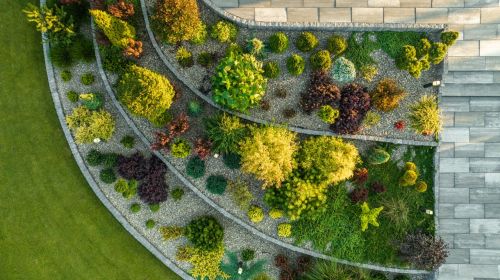If you're dreaming of a lush, well-maintained, and visually appealing garden or landscape, roll turf is just what you need! Especially ideal for those looking for quick results, ready-to-use roll grass instantly creates a green space the moment it’s laid. So, what is roll turf, how is it laid, and when should it be installed? Let’s explore all the details.

Roll turf is a ready-to-use grass system grown in special fields and cut with its roots to be delivered in rolls. This type of grass integrates quickly with the soil and creates a green area much faster than traditional seeding.
Advantages of roll turf:
Provides instant visual results
Prevents soil erosion
Creates a flawless aesthetic appearance
Effectively blocks weed growth
Resistant to seasonal changes
Roll turf varieties differ based on usage area and climate conditions. The most common types include:
Red Fescue (Festuca rubra): Shade-tolerant, ideal for landscaping
Bermuda Grass (Cynodon dactylon): Grows rapidly in hot climates, perfect for sports fields
Perennial Ryegrass (Lolium perenne): Germinates quickly and covers surfaces fast
Zoysia Grass: Drought-tolerant, suitable for arid regions
Choosing the right roll turf type depends on the climate and how the area will be used.
Roll turf can be laid during most times of the year. However, the ideal seasons are:
Spring (March–May)
Autumn (September–October)
During these times, the soil temperature and moisture balance support strong root establishment. If laying in summer, frequent watering is essential.
First, remove all stones, weeds, and debris from the area.
Level the ground and provide a 1–2% slope for drainage.
Spread high-quality garden soil rich in organic matter and compact with a roller.
Begin laying roll grass immediately after soil preparation.
Place the rolls tightly next to each other without gaps.
Use the "brickwork pattern" by offsetting each row from the previous one.
Gently roll over the area to ensure full contact with the soil.
Water thoroughly right after laying the turf.
Water every day for the first week, preferably in the morning or evening.
Once the turf has rooted, reduce the watering frequency.
First mowing should be done 10–15 days later using a lawn mower at a high setting.
Monthly fertilization supports healthy growth.
Aerate regularly and remove weeds to maintain quality.
Yellowing in roll turf is usually caused by improper care. Common issues and solutions:
Underwatering: Especially critical during the first few days. Establish a consistent watering schedule.
Overwatering: Leads to root rot and fungal issues. Check the drainage.
Soil compaction: Prevents roots from breathing. Aerate the soil to improve airflow.
Nutrient deficiency: Apply nitrogen-rich liquid fertilizers to combat yellowing.
When noticed early, yellowing can be reversed with the right actions.
Delaying the first watering after installation
Mowing the grass too short
Avoiding fertilizer during the first month or using the wrong type
Laying turf in overly shaded areas
Walking on the grass before it’s rooted
These mistakes reduce the effectiveness of roll turf. Paying extra attention during the first month is key to long-term success.
Ready-to-use roll grass has become essential in landscaping thanks to its quick application, instant greenery, and low maintenance needs. With the right timing, proper turf type, and regular care, you can enjoy a lush green area for years to come.
For all roll turf types, care tips, and professional installation services, Cem Botanik is always here to help!





